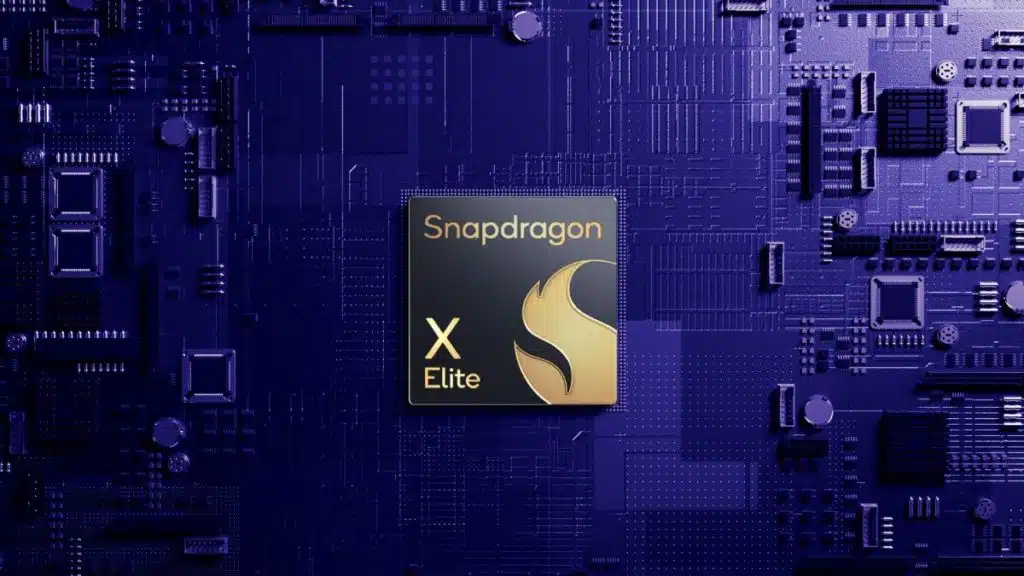
Qualcomm says that ongoing testing is showing how its upcoming flagship mobile processor will be capable of running most Windows games. The Snapdragon X Elite is set to debut in laptops in June and, pun intended, could be a game changer. Up until now, Windows users have primarily been limited to using devices with AMD or Intel processors but as ARM, and other processor technologies, continue to evolve Windows emulation techniques are opening the door to other possibilities for those on the move who want access to their games and apps.
The Verge’s Sean Hollister was on hand at GDC 2024 presentation where Qualcomm engineer Issam Khalil explained that ongoing testing has shown the Snapdragon X Elite performing admirably with games designed for x86/x64 processors. The “Windows on Snapdragon, a Platform Ready for your PC Games” focused its emphasis on how developers shouldn’t need to port games over to ARM for them to be playable but that they already work through emulation. Furthermore, Qualcomm has said that GPU performance will be unaffected by the x64 emulation process and that its caching process is extremely efficient.
Emulation support and limitations
The initial x64 to ARM64 block code translation process will see a brief hit to CPU performance but after that direct caching largely takes over for future passes. Qualcomm says that its Adreno GPU drivers will support all mainstream protocols such as DirectX 11/12, OpenCL, and Vulkan. Support for older OpenGL 4.6 and DirectX 9 is possible through layer mapping. However, games that use kernel-level access, commonly done for anti-cheat solutions, will not work and x64 emulation is limited to SSE4 instruction set. Khalil said there will essentially be three options for developers.
Windows on Snapdragon options (via The Verge):
- They can port their titles to native ARM64 for the best CPU performance and power usage since Qualcomm’s scheduler can dynamically lower the CPU’s frequency that way.
- They can create a hybrid “ARM64EC” app where Windows and its libraries and Qualcomm’s drivers run natively, but the rest of the app is emulated, for “near-native” performance.
- Or, they can do next to nothing, and their game should just work anyhow — using x64 emulation.
Qualcomm did not reveal which games it has tested so far, or performance statistics, but has said that it is looking at top titles on Steam. As ARM continues to grow in popularity emulation efficiency is bound to improve and Qualcomm’s efforts will drive this forward, especially given the powerful capabilities of the Snapdragon X Elite.
Snapdragon X Elite Specifications:
- CPU Name: Qualcomm® Oryon™
- Number of Cores: 12
- Architecture: 64-bit
- Clock Speed: 12 cores up to 3.8 GHz, Single and Dual-Core Boost up to 4.3 GHz
- GPU Name: Qualcomm® Adreno™
- Tera Floating Point Operations Per Second: Up to 4.6 TFLOPS
- APIs: DirectX® 12
- NPU Name: Qualcomm® Hexagon™
- Tera Operations Per Second: 45 TOPS
- Memory Type: LPDDR5x
- Bit Width: 16-bit
- Number of Channels: 8
- Transfer Rate: 8533 MT/s
- Bandwidth: 136 GB/s
- Capacity: Up to 64 GB
- Process Node: 4 nm
- Display Processing Unit (DPU) Name: Qualcomm® Adreno™
- Maximum On-Device Display Resolution: 4K Ultra HD @ 120 Hz
- Maximum External Display Resolution: 4K Ultra HD @ 60 Hz
- High Dynamic Range (HDR): HDR10
- Number of Concurrent Displays: 3
- Interface Type: DisplayPort 1.4
- Video Processing Unit (VPU) Name: Qualcomm® Adreno™ VPU
- Encoding Resolution: 4K @ 60 Hz
- Encoding Bit Depth: 10-bit
- Encoding Formats: H.264 (Advanced Video Coding (AVC)), AV1, H.265 (High Efficiency Video Coding (HEVC))
- Decoding Resolution: 4K @ 120 Hz
- Decoding Bit Depth: 10-bit
- Decoding Formats: H.264 (Advanced Video Coding (AVC)), VP9, AV1, H.265 (High Efficiency Video Coding (HEVC))
- Concurrency: Decode: 4K @ 60 Hz / Encode: 2x 4K @ 30 Hz
